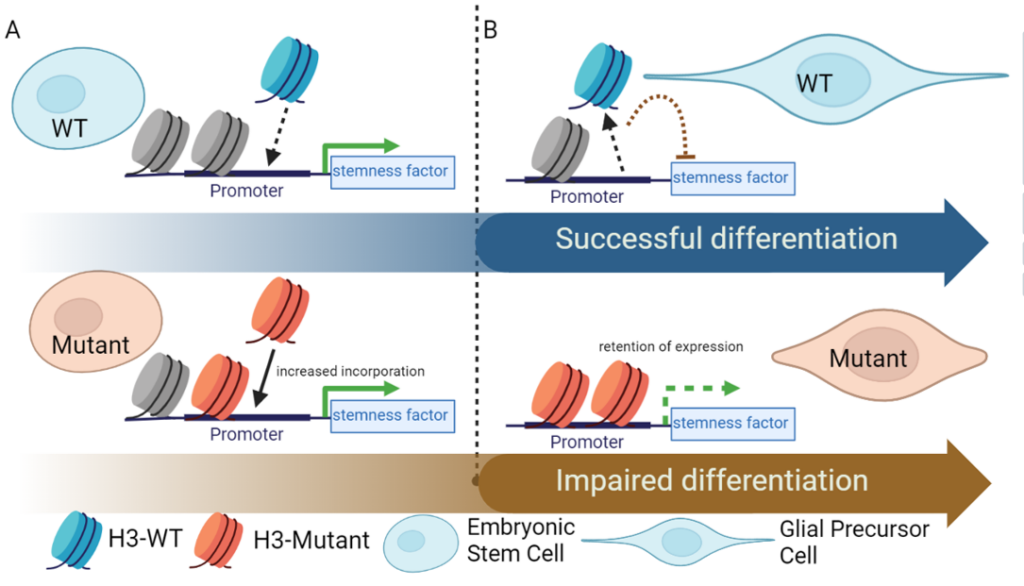Glioblastoma is one of the most aggressive brain tumors. DIPG (diffuse intrinsic pontine glioma) is a severe type of glioblastoma found in children that leads to death usually within one year. In over 80% of cases, DIPG is caused by a point mutation in histone H3, where a single amino acid is changed into another. To study the immediate molecular consequences of this H3 mutation, we established a system where we can express a healthy or a mutated version of H3 in embryonic stem cells, from which we can generate cell types relevant to brain cancer.
We measured the incorporation of the healthy and mutated histones across the entire genome, and found increased incorporation of the mutated histones around active genes. We also found that incorporation of mutated histones in brain-relevant cells leads to a maintenance of a stem-cell–like gene expression signature, providing mechanistic insights into the transition from a healthy cell to a cancerous cell. This newfound understanding could lead to new and potentially druggable therapeutic avenues.
Figure:

A. Mutations interfere with histone dynamics, leading to impaired histone regulation and enhanced incorporation.
B. Mutations lead to the impaired silencing of previously active stem-cell–related genes.
